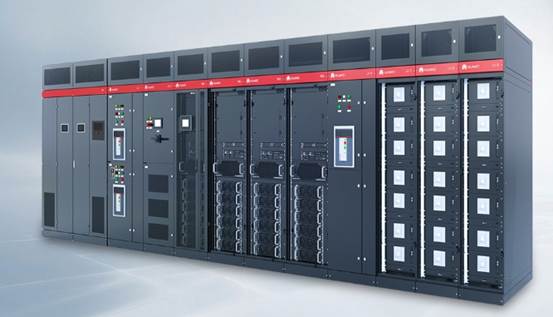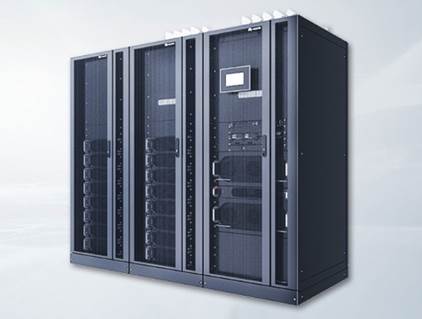Modern
data centers demand reliable power protection, making uninterrupted power
supply (UPS) systems essential infrastructure. However, many organizations
focus solely on initial purchase prices while overlooking long-term operational
expenses, leading to unexpected budget overruns. Proper UPS cost analysis
requires examining multiple factors including equipment selection, installation
requirements, energy efficiency, and future scalability needs. In this article,
we'll explore the comprehensive cost considerations for data center UPS systems
to help you make informed decisions that balance performance with budgetary
requirements.

What Are the Upfront Costs of a Data Center UPS?
Equipment Price Based on Capacity and Type
UPS
system costs vary significantly depending on capacity and technology type.
Small standby units designed for server rooms typically represent the most
budget-friendly option, while enterprise-grade online double-conversion systems
command premium pricing. Mid-range line-interactive models offer a middle
ground in terms of both performance and cost. Modular systems like Huawei's
UPS5000-H series follow a different pricing approach, allowing gradual capacity
expansion through additional power modules. When comparing options, it's
important to request complete quotes that include all necessary components like
power distribution units and bypass switches, which can substantially increase
the total base price.

Installation and Setup Expenses
Professional
installation typically adds a significant percentage to the overall project
cost, covering essential electrical work, cabling, and system commissioning.
Installation complexity and expenses increase when projects require new
electrical conduits, structural reinforcement for heavy equipment, or
specialized cooling solutions for battery rooms. Modern integrated solutions
like the PowerPOD can reduce installation complexity through prefabricated
designs that streamline deployment compared to traditional systems.
Organizations should always obtain multiple installation bids and verify
technicians possess proper manufacturer certifications to ensure quality
workmanship.
Additional Infrastructure Requirements
Many
organizations underestimate the supporting infrastructure needed for proper UPS
operation. Large systems often require dedicated cooling solutions, specialized
fire suppression systems, and reinforced flooring to handle substantial weight.
Battery installations may need ventilation upgrades to maintain safe operating
conditions. Lithium-ion alternatives like Huawei's SmartLi reduce some of these
requirements through their compact, temperature-tolerant designs, but may still
need complementary battery management systems. A thorough site assessment
conducted before finalizing UPS plans helps identify all necessary
infrastructure upgrades and prevents unexpected expenses during implementation.
What Ongoing Costs Should You Budget For?
Energy Consumption and Efficiency Impact
UPS
efficiency directly influences long-term operating costs, with even small
percentage differences creating substantial financial impacts over the system's
lifespan. Less efficient systems continuously waste more power as heat,
increasing electricity bills and potentially requiring additional cooling
capacity. Advanced UPS models with high-efficiency modes, such as Huawei's
S-ECO reaching exceptional efficiency levels, can provide significant energy
savings. Organizations should carefully evaluate efficiency ratings at their
expected operating loads rather than just peak efficiency claims, as real-world
performance often varies with utilization levels.
Battery Replacement Cycles and Costs
Battery
systems represent a recurring expense that many organizations fail to properly
account for in long-term budgeting. Traditional valve-regulated lead-acid
batteries typically require replacement every few years, with costs
representing a substantial portion of the original UPS investment. Lithium-ion
alternatives, while carrying higher initial price tags, offer extended service
lives that can reduce total ownership costs. Lithium solutions also provide
secondary savings through reduced cooling requirements and minimal maintenance
needs compared to traditional battery technologies. When comparing options,
organizations should calculate total battery-related expenses over the expected
UPS service life rather than just initial purchase prices.
How Can Different UPS Types Affect Your Total Cost?
Comparing Costs: Standby vs. Line-Interactive vs.
Online UPS
The
three main UPS technologies present distinct cost profiles that organizations
must carefully evaluate. Standby systems offer the most affordable upfront
pricing but typically incur higher long-term expenses due to lower efficiency
and more frequent battery replacements. Line-interactive models strike a
balance between initial cost and ongoing operational expenses, making them
suitable for many mid-range applications. Double-conversion online UPS systems
command premium pricing but often deliver the lowest total cost of ownership
for critical applications through superior efficiency and reduced maintenance
requirements. The optimal choice depends on each organization's specific
reliability needs and budget constraints.
Modular UPS Systems - Higher Initial Cost But Better
ROI?
Modular
UPS architectures typically carry higher initial price tags than comparable
monolithic systems but offer several financial advantages that can improve
long-term return on investment. Their scalable nature allows organizations to
purchase only needed capacity initially, deferring capital expenditures until
required. Hot-swappable components minimize costly downtime during maintenance
or upgrades, while standardized parts simplify future expansions. The
efficiency gains achieved by advanced modular systems, particularly in eco-mode
operations, provide continuous energy savings that accumulate over time. For
growing data centers, these benefits often justify the higher initial
investment in modular solutions.
The Cost of Redundancy Configurations
Implementing
redundancy in UPS systems significantly increases capital expenditures but
provides critical protection against costly downtime events. Basic N+1
redundancy typically adds a substantial percentage to system costs, while fully
duplicated 2N configurations essentially double the investment. However, the
potential financial impact of power interruptions often justifies these
expenses, particularly for organizations where downtime translates directly to
lost revenue or compromised operations. Modern architectures like PowerPOD
offer flexible redundancy approaches that can provide cost-effective protection
tailored to specific reliability requirements. Organizations must carefully
weigh their uptime needs against budget constraints when planning redundancy
strategies.
What Hidden Costs Might Impact Your UPS Budget?
Downtime Risks of Under-Specifying Your UPS
Inadequate
UPS capacity planning can lead to hidden expenses that far exceed the savings
from purchasing smaller systems. Undersized units may fail during critical
outages, potentially causing substantial operational disruptions. They also
experience accelerated battery degradation from frequent deep cycling,
increasing replacement frequency and costs. Organizations that don't
incorporate sufficient capacity headroom often face emergency upgrade expenses
when unplanned growth occurs. Proper initial sizing with adequate expansion
margins helps avoid these unexpected costs while ensuring reliable power
protection.
Future Expansion and Scalability Expenses
Fixed-capacity
UPS systems frequently require complete replacement when organizations outgrow
their capacity, representing a major unplanned capital expense. Modular systems
mitigate this risk by allowing incremental capacity additions, though they may
require complementary infrastructure upgrades to support expanded operations.
Battery systems must also accommodate future runtime requirements, with later
expansions potentially needing additional cabinet space or upgraded charging
systems. Solutions like Huawei's SmartLi simplify expansion through modular
designs that maintain consistent performance regardless of system size.
Forward-looking capacity planning helps organizations avoid premature system
obsolescence and the associated replacement costs.
Regulatory Compliance and Certification Costs
Meeting
industry standards and local regulations often involves unanticipated expenses
that impact total project budgets. Safety certifications, while adding to
product costs, are typically mandatory for insurance coverage and compliance.
Local fire codes may require specialized battery room modifications with
associated construction costs. Energy efficiency certifications, though
potentially increasing upfront expenses, often qualify for utility rebates and
tax incentives that improve long-term economics. Proper research into all
applicable regulations during the planning phase helps organizations avoid
costly retrofits and compliance issues after implementation.
Smart Strategies to Reduce UPS Costs Without
Sacrificing Reliability
Organizations
can employ several strategies to optimize UPS expenditures while maintaining
appropriate protection levels. Right-sizing systems through modular
architectures ensures capital is deployed efficiently to match actual load
requirements. Implementing advanced efficiency technologies maximizes energy
savings over the system lifespan. Consolidating multiple small UPS units into
centralized systems creates economies of scale in both capital and operating
expenses. Hybrid approaches that apply different UPS technologies based on load
criticality can provide cost-effective tailored solutions. Predictive
maintenance technologies help extend equipment life and avoid unplanned repair
costs. Bundled service contracts often provide better value than piecemeal
maintenance agreements.
Conclusion
Effective
UPS procurement requires a holistic view that considers both immediate and
long-term financial implications across the system's entire lifecycle. While
initial purchase prices represent an important factor, they must be evaluated
alongside energy efficiency, maintenance requirements, and future scalability
needs. Modern solutions like modular UPS architectures and advanced battery
technologies often provide compelling economic advantages despite higher
upfront costs. By carefully assessing specific power requirements, growth
projections, and risk tolerance, organizations can implement UPS strategies
that deliver reliable uninterrupted power supply while optimizing total cost of ownership. The most
cost-effective solution isn't necessarily the cheapest initially, but rather
the one that best balances performance and expenses over its complete service
life.
